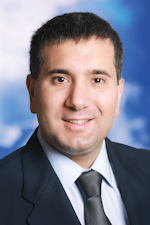Most aircraft ground handling processes performed every day have a successful outcome: airliners are ready to go unto their next mission in a safe condition. Occasionally, however, aircraft ground damage does occur with the effect of negatively affecting the continuity of operations. While airlines have always ready contingency plans for when aircraft are no-goes, there is indeed less consistency in tracking the costs associated with ground damage and in managing claims with service providers and insurers.
Aircraft damage assessment and claim recovery may not have an influence on the overall safety performance yet they represent an opportunity for airlines to reduce the financial impact of events which are not meant to happen and are indeed very costly when they occur.
Historically aircraft damage assessment and claim recovery have not always had a high priority, due to a legacy of bilateral agreements in air transport whereby an airline was exactly as likely to damage another airline’s aircraft as it was to have its own damaged by the same other airline. Therefore no specific development and practice for aircraft damage assessment and claims recovery really exist. But all of this was before 1998 when the IATA standard ground handling agreement (SGHA) was changed at article 8, so that physical damage could be claimed “The aim for an airline is minimizing the loss - direct as well as indirect - suffered when an aircraft is damaged and, at the same time, trying to establish preventive measures to prevent re-occurrences. The last years have shown that due to the economic downturn airlines have become keener to recover from aircraft damage” says Ivar Busk, manager of insurance and former head of airside safety at SAS Scandinavian airlines.
Busk believes that, since losses will always occur, it is necessary for airlines to get the experience and the knowledge on how to minimize losses by maximizing compensation as much as possible and on how to establish the necessary preventive measures. “It is essential to have an up-to date registration system and dedicated personnel to follow up. It is well known within the industry that some airlines nearly never claim for aircraft damage even if the damage is in the range of USD 1 million, the reason can well be that there is no consistent system to handle cases in a routine way” says Busk.
According to Busk it would be a sound practice for an airline to develop a cost model for the calculation of loss of use. “Airlines are well equipped with figures representing structured information concerning crew, maintenance, passenger interruption costs, ground operations, sales cost etc.; however, the know-how to put these figures together and present them in a convincing way has been hard to come by” says Busk.
A professional assessment of damage and consequent claim recovery is likely to minimize losses and to have a direct financial impact on the bottom line of the company. “Any airline could suffer badly from aircraft damage if an efficient system of assessment and claim recovery is not planned and implemented properly. In particular, smaller airlines suffer more when there is an unscheduled need to take one or two aircraft out of service” says Busk.
According to Busk claims recovery already starts when technical or ground handling contracts are negotiated with third parties. Very often these contracts contain an indemnity clause, which covers physical losses only and in part, e.g. the IATA SGHA/810 at article 8. “Also, limitations to the degree of negligence relating to the reason for or cause of damage in the operation can limit the claim to a minimum, or simply have the claim rejected. Furthermore, consequential losses arising from loss of use are very often not included at all. However, as an optional, they can be included in a contract if agreed upon” says Busk. Clearly, extending the liability of third parties with regard to consequential losses will have the likely effect of pushing service charges up, but – according to Busk - also put focus on preventive actions.
Staking Claims
Airline insurance (the hull policy) is normally activated only if the loss is caused by the airline itself and the deductible amount (varying from USD 100,000 to USD 1 million) is exceeded. But there is also deductible insurance which covers up the hull deductible down to a minimum of USD 50,000.00 depending on the actual needs of the airlines. “If an indemnity clause is included – as per, e.g., the IATA SGHA – the responsible party will be held liable up to the agreed maximum compensation, normally up to USD 1.5 million depending on the aircraft type. If the damage exceeds this amount, the affected airline’s own insurance will take over, but consequential losses are normally never covered. It should be noted, however, that it is not very often that the deductibles are passed in case of ground damage” says Busk.
Some services delivered to airlines have in contract some acceptance of consequential losses as well. If the entity responsible for the damage has no contract with the affected airline, strict liability will then apply, according to the laws of the country where the damage occurred. Very often this means that all costs can be compensated including consequential losses, according to Busk.
The limitation of the liability of ground handling companies as outlined in the IATA SGHA, however, does not apply in the cases service providers actually have gross negligence and/or maintain a behavior which is technically referred to as “recklessness with knowledge”. It is indeed very unlikely that professional ground service providers actually behave so to prevent the applicability of the IATA SGHA’s indemnity clause. Knowing that service providers’ liability is not always limited to typically a maximum of USD 1.5 million is however a useful piece of information, also because it paves the way to another logical, yet often overlooked, consequence of indemnity under IATA SGHA: management responsibility. “If a damage event can clearly be attributable to management responsibility there is an opportunity for airlines to claim consequential damages. These are for example instances when there is an inconsistency, let alone lack, of quality control” says Busk. Also the cost for using external expertise has to be considered.
According to Busk a limited number of airlines have developed competence in handling claims, because the number of cases are few and the experience difficult to obtain. If airline hull insurance is not involved, then airlines are often on their own regarding recovery. One way to gain experience and competence is to turn to external expertise to solve specific cases, but very few or non-specialized companies take care of this type of recovery. “During the past decades some consulting companies have established an extensive network in the world of aviation insurance companies and surveyors. This cane be of benefit when it comes to concrete cases, by causing less bureaucracy and a quick and expedient handling of the cases, without forgetting a maximum compensation” says Busk.
Handling Liability
Ground handling service providers have an understandably different perspective on the topic of extending their liability with regard to aircraft ground damage, and together with it the topic of claims recovery.
A panel speech at the IATA Ground Handling Council in Kuala Lumpur in 2011 by Jon Conway, Divisional Senior Vice-President dnata – Dubai, provides a very clear view of ground handlers on the topic. “We are debating the wrong topic. Acceptance of this proposition, especially if enshrined into future versions of the SGHA will, in my view, present a real danger that the more important issue – and the topic we should be discussing – will receive less focus, whilst the insurers and their brokers make lots of money. That topic is ‘How can we [the airlines, GHA’s and GSE manufacturers] jointly work together to reduce and prevent aircraft ground damage.
“The ground handling industry is totally reliant upon the airline industry. If our customers are scrambling around to make a paltry 1.4% profit margin, they are undoubtedly going to squeeze every key supplier until they squeal. The effect on the ground handling industry, over the last 10 years or so, is for the sector to drive down its own operating costs to desperately find some black ink at the end of the financial year. I personally believe this has led to decreased investment in many ground handling businesses, creating a situation [in some markets] which has probably reduced the quality of ground handling product to the airlines. It is this topic which I also feel should be the subject of further debate.
“A ground handler could be looking at annual premiums of up to 500K for cover between $150 million and $500 million based, of course, on the various exclusions, a limited liability and prevailing market conditions. A 25 percent increase is the conservative estimate to increase liability to cover direct, indirect or consequential loss – whether arising from an operational incident or an act of terrorism. Incidentally, on checking with a leading broker I discovered that cover for ‘consequential loss’ or ‘loss of use’ is readily available, but airlines elect not to buy it; preferring to manage such events as ‘operational expense.’
“Similarly, even though readily available, most of the world’s leading airlines do not buy hull deductible insurance and simply absorb these as operational costs – whether arising from a ground handling incident, or a bird strike. Indeed, for the more insurance savvy amongst them, buying such insurance is a mere long term check swap with insurers and clearly, passing these costs to the ground handler, whilst they continue to save on their insurance premium costs – is just not on. Many smaller independent handlers would receive a claim and their subsequent ‘revised’ premium could drive them out of business. The prospect of less choice for the airline purchasing manager can hardly be welcome. Many GHA’s would surely reappear in a different guise, but is any of this addressing the real issue of prevention and reduction of aircraft damage” says Conway.
Damage assessment and claims recovery is a last resort to limit the financial impact of ground safety events on an airline company’s bottom-line. If anything is actually to be substantially improved it is important to target the systemic weaknesses that characterize the aircraft ground handling system where all operators struggle to do their best: airlines, ground service providers, line maintenance service providers, security companies, fire fighters, catering companies, refuelling companies etc. “The congestion of ramp surfaces at large international airports, which normally have 3/4 ground service providers, is indeed a systemic deficiency which per se makes ground safety events more likely to happen. Ground handling also bears the cost the equipment utilization which is then charged to the airlines and then to passengers. Why not developing a system to rent ground support vehicles to service providers and thus minimize traffic on ramps and maximize ground support equipment utilization? One day this will happen, we are just not there yet” says Busk.
As an eminence grise in the world of aviation insurance Busk also has a suggestion for ground handling companies, a lesson learnt from the domain of airline insurance. “If you look at the airlines, they often purchase insurance in pools so that insurance charges become individually cheaper for the airlines forming the pool. To my knowledge this practice is not very common in the ground handling domain of the business, yet if ground service providers did form pools they would themselves have reduced insurance charges, this of course depending on the actual situation and the risk profile” says Busk.






